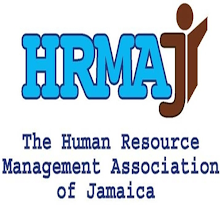This week's FridayBlogPost will highlight an element of organizational effectiveness from a practical standpoint, highlighting the available avenues to addressing issues such as low employee morale and low productivity. A recent article by Jeffrey Tobin, a former HRMAJ conference keynote speaker, spoke to these issues. Entitled '"I Succeed Because I Fail" Tobin examined the relationship between positive reinforcement and productivity, factors which affect the overall capacity of any organisation.
The secret behind the effectiveness of reinforcement he purports, claims supported by a study recently conducted by Michigan State University, is creating the option for failure.Whilst employees may currently perform at the expected standard, making the mistake of avoiding challenges can prevent the opportunity for failure to produce evaluation, improvement and understanding.
According to the article:
"No one wants errors, but this is how people advance. If you want your staff to learn and grow you must give them projects that are challenging enough that they may well err. And it's your responsibility to encourage them. Downplay errors; encourage persistence."
In the article Tobin also outlined eight actions that can be taken to implement said reinforcement:
1. Empower your employees; give them challenging responsibilities and let them go
2. Don't worry about their methods. Focus solely on the results you expect. (This is hard for many managers to learn and employ. It is however, imperative)
3. Recognize successes. Downplay mistakes
4. Remain silent and have the employee asses the results of his/her own efforts
5. Ask what they might have done differently
6. Provide your input, emphasizing strongly their efforts and things that they did well
7. If they failed, help them to come tot heir own conclusions about what they mights have done differently
8. When possible, encourage them to devise their own plan for resolving the problem or challenge
For an in depth look at this article visit www.jeffreytobin.com
Accel-Team is a company based in the United Kingdom that provides counsel to organizations in improving the productivity of their human and other resources. They have also commented on the matter of positive reinforcement. In the following flow chart they identify the benefits of motivation and the adverse effects due to its lack.
It is evident from both sources therefore that employee motivation serves as a benefit to overall productivity and should be implemented where found unenforced. What are your views?
Join in the discussion and tell us where you stand. It begins with us, it begins right here.
The Human Resource Management Association of Jamaica




No comments:
Post a Comment